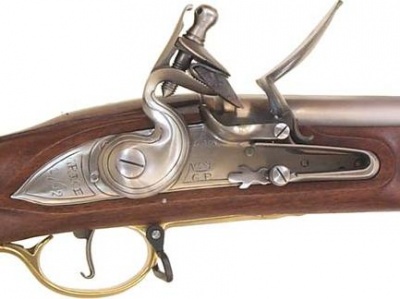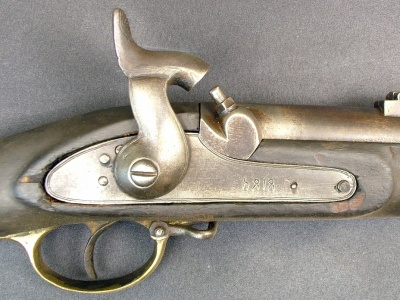| If you have been locked out of your account you can request a password reset here. |
Difference between revisions of "Guide to Muzzleloaders"
| Line 19: | Line 19: | ||
==Common Flintlocks== | ==Common Flintlocks== | ||
| − | [[Image:BrownBessInfantry-Musket-1722-1768.jpg|thumb|none|600px|Long Land Pattern Brown Bess | + | [[Image:BrownBessInfantry-Musket-1722-1768.jpg|thumb|none|600px|British Long Land Pattern Brown Bess - .75 cal]] |
| + | [[Image:Charlie.jpg|thumb|none|600px|French Charleville Mle 1766 - .69 cal]] | ||
| + | [[Image:Kentuckyrifle.jpg|none|600px|American Pennsylvania rifle - .36 - .45 cal]] | ||
| + | |||
| + | |||
| + | ==Common Percussion Locks== | ||
| + | [[Image:Hawken.jpg|thumb|none|600px|Hawken Plains Rifle - .50 cal]] | ||
| + | [[Image:Springfield1861.jpg|thumb|none|600px|Springfield Model 1861 - .58 cal]] | ||
| + | [[Image:1853enfield.jpg|thumb|none|600px|Enfield Pattern 1853 - .577 cal]] | ||
Revision as of 16:36, 3 October 2010
As muzzle-loaders are the most frequently mis-identified firearms on the site, I'm creating a simple guide to their understanding and identification.
Flintlock vs Percussion
The flintlock, introduced in France in the early 17th century, was the first practical method of firing a gunpowder weapon without using a burning match. It used a piece of flint held in a set of jaws called a cock, striking a piece of steel called a frizzen, igniting a small powder charge in a flash pan. This would then ignite the main charge.
The percussion lock, otherwise known as a caplock, was introduced in England and America in the 1820s. It used a hammer striking a fulminate of mercury cap on a nipple, the flame of which would then ignite the main charge. This was significantly simpler, faster and more reliable than the flintlock.
Musket vs Rifle
The term "musket" refers specifically to smooth bore firearms without rifling, which are inherently inaccurate and can typically only be used to about 75 yards. Rifles refers to rifled firearms, whether breech or muzzle loading. When rifles were first introduced to military use in the late 18th century, they were a specialist weapon used by soldiers separate from the musket-armed line infantry, as although they were far more accurate they could take up to a minute to load. When the introduction of the Minie ball in the 1850s speeded loading, allowing all infantry soldiers to be armed with rifled weapons, the rifles adopted were of musket length and sometimes referred to as rifle-muskets. Rifle units typically received as shortened version of the infantry rifle-musket, referred to simply as a rifle. This practice was gradually abandonned by the 1870s (earlier in the United States due to the Civil War) and all firearms were simply referred to as rifles.
The term musket enjoyed a brief revival in late 19th and early 20th century America as a marketing term used by various companies to refer to the militarized versions of their commercial products. Thus the militarized Winchester 1866 as used by the Turkish army was referred to as the Winchester 1866 Musket, and so on, however this was not a technical term and further details are outside the scope of this article.
Common Flintlocks







